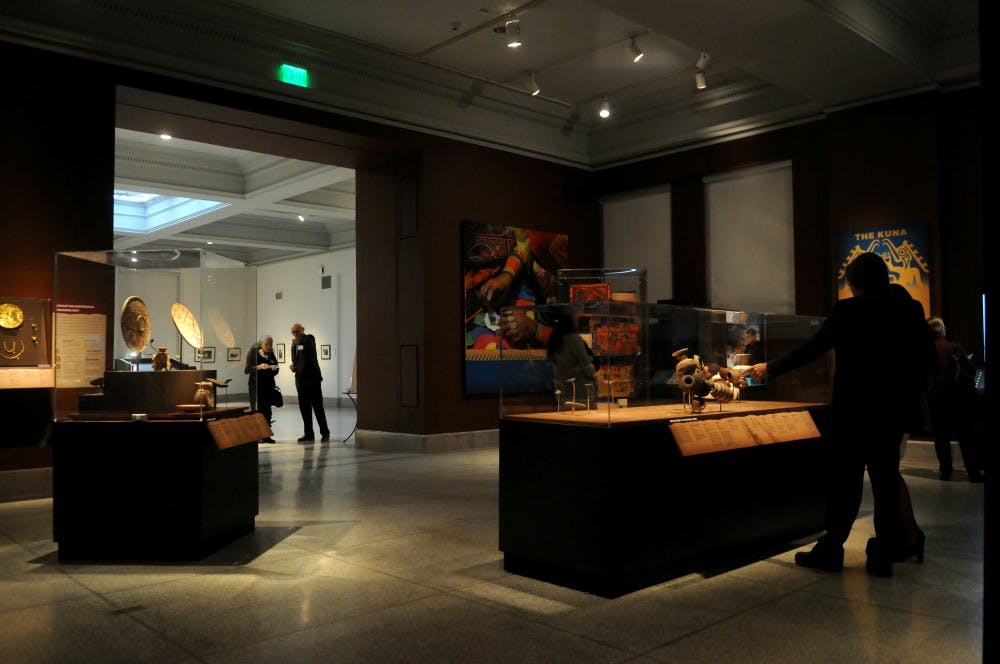
After opening remarks, visitors sampled Panamanian breakfast foods in the gallery portion of the exhibit.
Credit: Alice RenGold, emeralds and Panamanian skeletons are now within a 15 minute walk.
This Saturday, the Penn Museum will showcase a new exhibit of one of the greatest archaeological achievements in Penn’s history. The exhibit, called “Beneath the Surface: Life, Death, and Gold in Ancient Panama,” displays a great variety of artifacts found at an ancient burial site referred to as Burial 11.
Discovered in the late 1920s when a flooding river began to cough up pieces of gold, Burial 11 became a major excavation project for Penn workers in 1940. Within a few months of digging, the archaeologists had found what was, until recently, the richest and most complete burial site in all of the Americas.
Exhibitions of objects from this site are nothing new — they have been displayed as rare art pieces of the Cocléan people since the 1950s. It wasn’t until a year and a half ago, however, that an idea was hatched to reproduce the whole of Burial 11 in its own exhibit, with every artifact in the exact place where it was found.
Leading the way in this project was College senior Monica Fenton, who spent months interpreting field notes from the site’s original excavation to figure out where everything was supposed to go. “I was looking at 75-year-old, pencil-drawn maps,” she said. Working with her on the project were College junior Ashley Terry and College sophomore Sarah Parkinson, who together served as curatorial assistants for the excavation.
“Students have participated in many exhibits in the past, but not at the level that they have in this project,” Penn Museum Curator Clark Erickson said.
Terry researched the field notes and transcribed more legible versions for the other workers, while also handling many of the artifacts that will soon be going on display in the Penn museum. Parkinson researched the background of many of the artifacts on the site so they could be more easily identified.
One notable object, for example, is a small golden creature with a large emerald embedded in its back, found around the neck of one of the central skeletons. This artifact reflected the great power of its original owner, and is partly responsible for the burial site’s modern day fame.
Instead of trying to display the vast riches found amongst the skeletons, however, this exhibit was created with the intention of showcasing the people themselves. “The main focus is the people that were buried here,” Erickson said. The point of the exhibit is to show the people exactly as they were found, each skeleton with his own belongings from a former life.
“It’s a pretty different approach, and I think it’s given an extra dimension to the objects,” Terry said.
The Daily Pennsylvanian is an independent, student-run newspaper. Please consider making a donation to support the coverage that shapes the University. Your generosity ensures a future of strong journalism at Penn.
DonatePlease note All comments are eligible for publication in The Daily Pennsylvanian.




